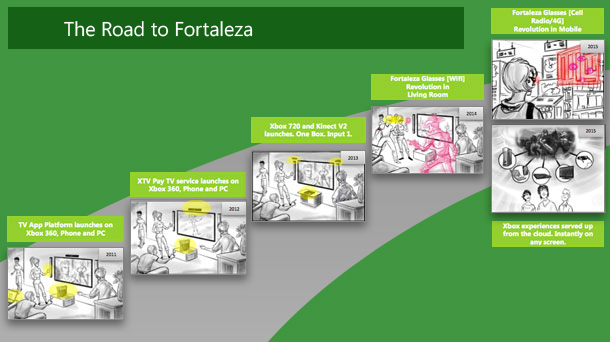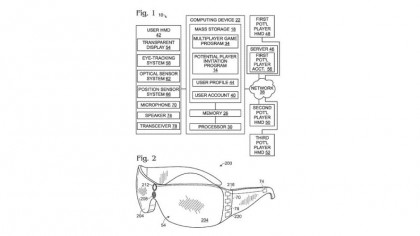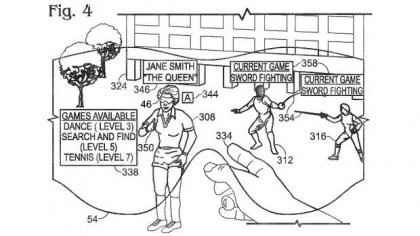Xbox One needs a serious virtual reality check
Will Project Morpheus force Microsoft to take the red pill?

On Tuesday, Sony unveiled a prototype for a virtual reality headset peripheral for the PlayStation 4 - Project Morpheus. During the event at the Game Developers Conference in San Francisco, Shuhei Yoshida, president of Sony's Worldwide Studios, revealed that Sony had been working on the technology - named Project Morpheus - for three years. That's roughly one ice age in internet time. The company has no release plans to share yet, but fully intends to build it up for a commercial launch.
You'd be forgiven for thinking that Sony has caught Microsoft with its pants down; that there's no way Microsoft will be able to develop, build and market a true competitor to Morpheus without being left trailing tragically behind in the dust. But according to certain reports, you'd be wrong. Microsoft is still in the game - it's just keeping quiet about it.
Fortuitous Fortaleza
Also on Tuesday, the Wall Street Journal reported that Microsoft has a secret virtual reality device in the works, citing the word of "people familiar with the project." The report makes no mention of when exactly Microsoft will reveal its own VR headset, or indeed how that headset will compare to its potential competitors like the PC-exclusive Oculus Rift and now, Project Morpheus.

The WSJ report links the latest rumours to a patent filed by Microsoft in January 2012 and uncovered in August last year, for a device known as Fortaleza. Images accompanying the patent detail a transparent head-mounted display - a little like Google Glass - equipped with wireless, motion and voice sensing functions, through which users will be able to browse and join multiplayer games on their TV screen.
However, the device will also be able to generate screen-free virtual reality experiences such as swordfights and dance-offs. By the by, Fortaleza itself is a term we've heard before - in a leaked Xbox One document that surfaced in June 2012. For a bit of context, several features detailed in its 56-odd pages (such as "transmedia" TV integration and Blu-ray compatibility) have since come to pass.
Armed with forward-mounted infrared depth and positional sensors, gyrometers and microphones, the Fortaleza headset would be able to scan areas for space, track your eye movement and translate it to hands-free menu browsing, and recognise the people you're looking at. How very Minority Report.
While wearing the head-mounted device, you'd be able to sign into your Xbox Live account by way of voice commands, invite people to games by simply waving your hand at them, and access games stored both locally and on the cloud via a host device - either a console, a smartphone, a laptop or PC.
Get daily insight, inspiration and deals in your inbox
Sign up for breaking news, reviews, opinion, top tech deals, and more.

"To invite others to join a multiplayer game, a user may access and work through a menu system with his or her hardware device to send an invitation to another player," notes the description on the original patent. "Using such a menu system may be time-consuming and may involve the user focusing on the tasks associated with sending an invitation.
"Such a menu system may also offer a stilted and limited user experience that discourages a user from making spontaneous invitations. Additionally, if the user is actively playing a multiplayer game, using such a menu system to send invitations mid-game may take the user away from the game action. Further, where the user's hardware device is located in a fixed location, the user's ability to make face-to-face invitations in other locations may also be limited.
Catch your eye
"To address the above issues, a multiplayer game invitation system including a user head-mounted display device and related methods for inviting a potential player to participate in a multiplayer game are provided. In one example, a method may include receiving user voice data from a user and determining that the user voice data is an invitation to participate in a multiplayer game.
"Eye-tracking information, depth information, facial recognition information, potential player head-mounted display device information, and/or potential player voice data may be received. The invitation from the user may be associated with the potential player using the eye-tracking information, the depth information, the facial recognition information, the potential player head-mounted display device information, and/or the potential player voice data."
Which is, effectively, a roundabout way of saying that the Fortaleza device will make it easier to recognise and play with others online.
All this could mean nothing, of course. Microsoft recently toyed with the impressive-looking Illumiroom home projector prototype before admitting that it had no intention of bringing it to consumer homes - indeed stating that it would simply be too expensive to do so at the present time.
But now with Oculus Rift, Sony and reportedly even Valve proclaiming that virtual reality "will shape the future of games," can Microsoft afford to miss out? More to the point, how would an Xbox version of the device work alongside Kinect, what can poor glasses wearers like me do to avoid the indignity of double specs and honestly, do we truly even want virtual reality in our gaming?
I'm still skeptical about the mainstream and home console uptake of VR and 3D gaming in general, but then again I haven't tried the Oculus Rift, which has been garnering support left right and centre since its unveiling at E3 in June 2012. Perhaps 2014 is the year of Virtual Reality. As Morpheus himself said, free your mind.